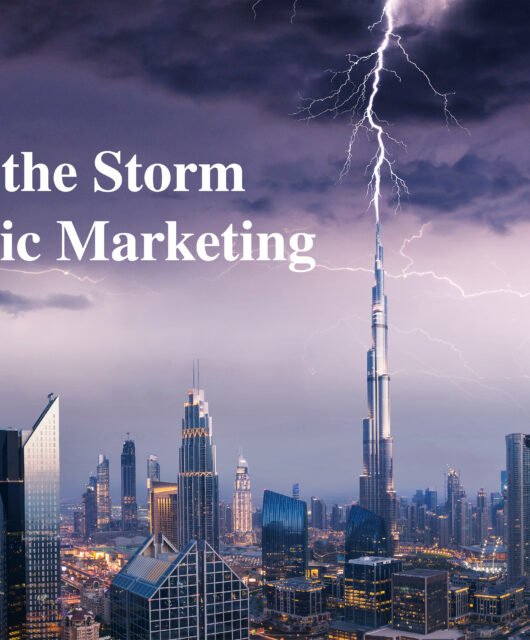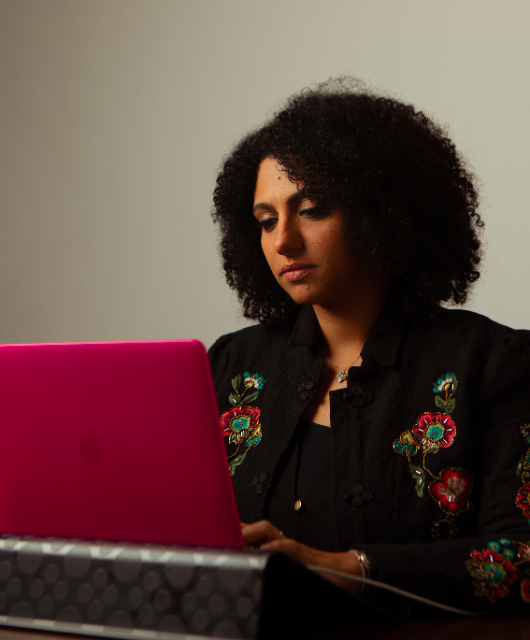The Frictionless Predictions Of 2023, By FP7 McCann MENA’s Anis Zantout
Ending the year with an optimistic view is a good sign, seeing that the most used emoji of 2022 was the crying out laughter emoji versus the loudly crying face emoji of 2021. Yet, a study of 7000 adults shows that after Covid-19 pandemic, people have become less extroverted and less agreeable. No matter how hard we try, technology will struggle to replace the magic of human connections. In the future, the stickiest innovations will be those that encourage more connection, not less.

At McCann World Group, we remapped the world according to culture, identifying many tectonic truth that we believe shape culture using a dynamic system to map global culture that is evolving all the time, which is why we update it on an annual basis to track culture in an ever-changing world.
One of those truth I will shed light on, is about the future of frictionless economy. People are intentionally reintroducing certain frictions into their lives, connecting with each other through new mixes of digital and IRL, and navigating a new world of digital tools promising to elevate their lives. But, humans have an interesting and somewhat contradictory relationship with Friction. There is decreasing tolerance for the steps that stand between us and the things we want ( food, love, beauty, entertainment, brands…).
We want to remove those things that stand in the way of our goals. But friction makes us feel human. We want to maintain human friction, we need it. So, for example, online shopping makes our lives easier, but it also makes our lives lonelier, robbing us of those opportunities to meet, speak to and connect to others. Ease and efficiencies have long been cornerstones of a modern economy, but this has become turbo-charged in recent years with dynamics like the pandemic, WFH and new innovations to remove frictions from our lives…We’ve ran it successfully online for 2 years and we could have done it again, but there’s something about being together, the energy, the serendipitous conversations, the connections that can’t be replaced virtually.
If you think about the evolution of the internet as we move into the world of the metaverse, people want to exploit not just the informational layer of the internet, but tap into the emotional layer of what makes us human which is what the metaverse is aiming for. Slowing down. Its making the internet more beautiful and creating that sustainable emotional reward instead of that swipe down instant gratification on web 2.0.
While web 3.0 will take some time to shape up, the current digital marketing landscape is constantly changing. From NFTs to social fatigue, marketers need to be nimble to meet evolving customer needs. As consumers get used to new tech, or as they move to new ways of spending their time online, it’s important for brands to meet their audiences where they are. At FP7 McCann, we have identified 7 trends that we can tap into straight as we head into 2023, It’s impossible to try every single new trend, but it’s definitely possible to dabble in new ways to reach your audience. Try implementing one or two of these trends into your digital strategy to reap the benefits with your consumers.
- Trend #1: Retro Revolution
- Trend #2: Communal Growth
- Trend #3: ”Phygital”
- Trend #4: Influencers are the new shops
- Trend #5: Focused Niche
- Trend #6: Snackableeee
- Trend #7: Improved Inclusivity
TREND #1:
Retro Revolution
In September 2021, Blue’s Clues’ Steve Burns got in front of the camera and sent millennials who grew up watching the show into a tailspin. For a lot of viewers, Blue’s Clues was an integral part of their formative years. This simple video features Steve in costume explaining his abrupt exit 20 years ago. It helped Nick Jr. garner over 2M likes and 529K retweets, and it was just a part of the show’s 25th-anniversary celebration.
How is a children’s show video relevant to us, you ask? It’s because Nostalgia pays on social. A time of immense global upheaval — has made us long for simpler times when words like masks and vaccines were not a part of our daily lingo. This collective longing for the years gone by has made nostalgia marketing a big part of every marketer’s playbook.
What retro idea do you want to use for your next campaign? Whether it’s relaunching a much-loved product from your past or commemorating an anniversary through a brand partnership, you need to identify the exact themes you think your audience will connect with you need to identify the exact themes you think your audience will connect with.
Trend #2:
Communal Growth
It’s not brands. Its people. More and more brands are realizing the value of user-generated content and putting in measures to scale it. Consumers today are belief-driven and increasingly look for authenticity from brands. We did just tell you that nostalgia marketing is in, but the glossy perfection of the ‘90s is definitely not. While the concept of user-generated content is not new, this shift toward belief-driven buying has made peer reviews and word-of-mouth marketing way more important than the carefully curated Instagram feed of a brand.
The need for mission-led brands that are diverse and inclusive in how they communicate is no longer a ‘nice to have’ – it has become a commercial imperative. Today’s consumer wants to align with mission-led brands that they can trust and that are authentic.
Encourage the users already posting about your brand through reposts, sharing, and mentions. Your community is vital to building a strong UGC strategy, so interact with them and be more receptive to the UGC you already get so you can inspire more.
TREND #3:
“Phygital”
The line between realities is getting lighter by the day.
“Metaverse” is the word of the year across all industries, thanks to pandemic-induced shutdowns and digital adoption. And both mixed reality and hybrid events have seen an increased volume of online mentions over time, according to research by Brandwatch.
Between 1 January and 15 November 2022, there were over 19.2 million mentions of metaverses in online conversations. According to BuzzSumo, over 265k articles were published, generating over 13 million engagements.
Events are also going hybrid. A Forrester survey. reveals that 58% of marketing leaders agree that “all flagship B2B marketing events will be hybrid in two years”. It’s not much of a stretch to say that the future is hybrid, irrespective of whether we’re talking about work, events, conferences, or retail.
Brands are even selling differently, take Burberry for example, who launched a social retail store in Sichuan, China. This was the start of a new line of digitally-enabled, immersive retail experiences. This specific store is centered around a custom WeChat mini-program that allows customers to interact with the brand both in-store and online.
Burger King became the second QSR brand globally to venture NFT after they partnered with Sweet, a nonfungible token (NFT) platform, as part of its Keep It Real meals. Each Keep It Real meal box carried QR codes that guests had to scan to unlock one of three digital collectibles. Collecting all three NFTs led to various rewards for customers. In addition to Burger King, several different brands have jumped on the NFT bandwagon, including, of course, Budweiser. The beer brewer even changed its Twitter profile picture to a hand-drawn beer rocket NFT. Revealing its wallet address, however, led to trolls sending in NSFW NFTs to Budweiser.
This movement is showing no slowing down with conversations around NFTs increasing 800% YOY to date
Social retail, AR, NFTs… This trend of blending the virtual with the physical provides a lot of different creative avenues to go down. Don’t jump on the bandwagon just because all the popular kids are doing it. For instance, a mom- and-pop store will definitely not switch to social retail overnight — at least, we aren’t in that season of Black Mirror yet.
As a brand, you should be as inclusive as possible. Whether you’re making an NFT makeup filter for digital avatars or curating a whole new space, it’s important to make sure everyone is welcome to enjoy it.
TREND #4:
Influencers are the new shops
The meteoric rise in popularity of apps like TikTok and Twitch also shows the potential for activating influencer partnerships. 2023 will continue to see the impact of influencers reaching the bottom of the funnel and helping with quantifiable conversions. But it’s more than just branded collabs.
While arguably a strange concept, virtual influencers have also become increasingly common in a short amount of time. Interest in this new phenomenon is growing, and the market size is expected to grow by 26% from $4.6 billion by 2025. Virtual influencers receive higher engagement rates than real people. Making use of their space in the metaverse, as well as their social media presence, could be worth keeping an eye on for brands wanting to expand their digital reach.
Find the right influencers in your niche.
Once we’ve listed our goals, we need to identify the influencers operating in the same KPI framework as our objectives. Their followers will already be invested in their content and the topic they are known for, so their opinions and endorsements mean a lot. Micro and nano influencers, in particular, can help you engage better with our target audience.
TREND #5:
Focused Niche
Beyond generic affinity, lies tribes and niche communities. In 2022, you cannot wander into a book store without encountering a “Trending on #BookTok” table. BookTok, the book community of TikTok, gets over 20 billion views and has even given brick-and-mortar stores a sales boost. Just the hashtag #BookTok had over 24 billion views at the time of writing this eBook.
This is a larger sign of the importance not just of short-form entertainment like TikTok and Reels but also of subcultures and communities. Even topics such as Fishing have found a home in social, with the subreddit r/fishing seeing immense growth in recent years.
Social media is noisy, and some users are moving away to create niche communities where they can communicate with like-minded individuals about shared interests. Steering conversations in such communities is also easier because of the topic focus, increased engagement, and less noise.
Create a community around your niche.
Communities have become high-growth channels. Create a Slack channel, Discord Server, Twitter Spaces, or any other kind of online community where your audience can create a shared bond over your niche. Ensure you don’t focus too much on making a sale and inadvertently drive users away from your community.
TREND #6:
Snackableeee
Short, authentic, entertaining.
TikTok has now beat YouTube’s average watch time for Android users in MENA. This is particularly impressive because the network only allows for a video length of three minutes, whereas YouTube allows much longer videos. The latter is also behind in terms of engagement, with BuzzSumo showing that video engagement on YouTube has declined by 37% since 2020.
TikTok and Instagram Reel’s meteoric rise in popularity in such a short period of time has not exactly gone unnoticed, with the other social networks coming up with their own snackable clones including YouTube Shorts, and Snapchat’s Spotlight. Much of the content’s success can be attributed to its short-form content that’s authentic, entertaining, and democratizes social media for all.
Leave room for serendipity.
Snackable content does occasionally involve jumping on trends, pop culture moments, and Twitter memes. By all means, plan your long-term snackable content calendar, but also be ready for bandwagon-jumping when the need arises.
But some brands have taken things a step further, using very simple, presumably low-cost production methods in places you’d never expect. For example, the top-mentioned ad for the Super Bowl in 2022 belonged to Coinbase. The ad was simply a QR code bouncing around on the screen, yet it generated more than 79,000 mentions online during the game. Unpolished content isn’t going away – in fact, it feels like we’re still yet to reach its peak in popularity. And, with dwindling marketing budgets in the face of economic hardship, this could be a blessing for the cash-strapped content team.
TREND #7:
Improved Inclusivity
First things first: Inclusivity is not a marketing ploy to increase profits. The past two years have seen a lot of calls for better representation in media and advertising, diversity in the C-Suite, and for businesses to go beyond performative activism and do better. 2022 will see more brands taking this to heart — making inclusivity and accessibility a top priority for everyone. Always remember, inclusivity is resolved by representation, it’s not a box you check off to win marketing points by posting statements on Twitter.
Words have power.
So, choose them carefully. You don’t want to exclude an entire group of people inadvertently. “Hey, guys”, “ladies and gentlemen”, and other commonplace expressions are all exclusionary in one way or another. Be mindful of the words you use in your marketing communications so as not to other the very audience you’re marketing to.
Moving forward, marketers will need to exhibit cultural dexterity which represents an advanced approach to cultural competence required in today’s diverse global business settings. Rather than a static learning specific to only one national, ethnic, generational, or other group based on either western or monocultural standards, Cultural Dexterity combines cultural knowledge, emotional intelligence, and interpersonal skills that can be adapted to achieve improved business results in any cross-cultural situation. Assimilating one culture at a time, or approaching people as one dimensional, simply is not an option. What todays marketing leaders need is Cultural Dexterity, a new type of proficiency and mindset about diversity.
At FP7 McCann, we use those kind of truth and trends to bring a variety of perspectives together to drive divergent thinking through an inclusive ideation processes. Innovation is rooted in a mix of inspiration, opportunity identification, ideation, increasing team performance and using innovation tools. At each stage, it is easy to lean into what is comfortable and known, but we need to challenge ourselves to break out of our boxes into unexplored territories and opportunities.
Once a brand has been inspired by what is happening and has identified opportunities to bring new futures into reality, it can use a process of ideation to create culture changing ideas. But the ideas will only be as powerful as the voices that are included in the process. We are not in the business of prediction, but like to forecast potential futures. We like to identify future signals and use divergent thinking to imagine new worlds.
These futures and future artifacts can be potent symbols to develop business strategies, but can also help us imagine futures that are more equitable.





